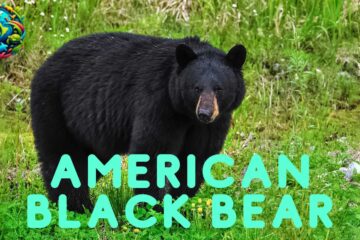
Crow: The Intelligent and Adaptable Bird of the Sky
Crow: The Intelligent and Adaptable Bird of the Sky
Crows, members of the Corvidae family, are among the most intelligent and adaptable birds found worldwide. Known for their problem-solving abilities, complex social structures, and wide-ranging habitats, crows have captivated human imagination and curiosity for centuries. This article delves into the fascinating world of crows, exploring their behavior, habitats, and unique characteristics.
Amazing Fact:
Crows are renowned for their intelligence, rivaling that of great apes and cetaceans. They have demonstrated remarkable problem-solving skills, tool use, and the ability to recognize human faces and remember them for years, showcasing their advanced cognitive abilities.
Habitat/Food:
They are highly adaptable and can thrive in diverse environments, from rural farmlands and forests to bustling urban areas. Their omnivorous diet includes insects, small animals, seeds, fruits, carrion, and even human food waste, allowing them to exploit various food sources in different habitats.
Appearance:
They are medium to large birds with black feathers, strong, stout bills, and powerful wings. Their plumage often has a glossy sheen, which can exhibit hints of blue or green in the sunlight. They have sharp, intelligent eyes and a distinctive cawing call.
Types/Subspecies:
– American Crow (Corvus brachyrhynchos)
– Common Raven (Corvus corax)
– Hooded Crow (Corvus cornix)
– Carrion Specie (Corvus corone)
– Northwestern Crow (Corvus caurinus)
– Fish Crow (Corvus ossifragus)
– Jungle Crow (Corvus macrorhynchos)
Location:
They are found on every continent except Antarctica. They are highly adaptable and inhabit a wide range of environments, from temperate and tropical forests to grasslands, deserts, and urban areas. Their ability to thrive in various climates and landscapes makes them one of the most widespread bird species.
Predator & Threat:
While they are skilled at avoiding predators, they are occasionally preyed upon by larger birds of prey, such as hawks and Eagles. In urban areas, they may also face threats from domestic Cats and Dogs. Habitat destruction and human activities can pose significant challenges to crow populations.
Mating:
They are monogamous and often form long-term pair bonds. During courtship, males may perform aerial displays and bring food offerings to females. Both parents participate in building the nest, incubating the eggs, and raising the young, showcasing their strong family bonds and cooperative behaviors.
How They Communicate:
They have a complex system of vocalizations and body language used for communication. They produce a wide range of calls, including caws, clicks, and rattles, to convey different messages, such as alerting others to danger, establishing territory, and coordinating group activities. They also use visual signals, such as posturing and feather displays, to communicate.
Crows in Different Religions:
Movies on them:
Crows have appeared in various films and documentaries, often highlighting their intelligence and adaptability. Notable examples include:
– “The Crow” (1994) – A dark fantasy film featuring a crow as a symbol and guide.
– “The Birds” (1963) – Alfred Hitchcock’s classic horror film featuring crows and other birds.
– “A Murder of Crows” (1998) – A thriller with crows as a significant plot element.
How It Is Pronounced in Different Languages:
– Spanish: Cuervo
– French: Corbeau
– German: Krähe
– Mandarin Chinese: 乌鸦 (Wūyā)
– Hindi: कौवा (Kauwa)
FAQs:
1. Why are crows considered intelligent?
– They exhibit advanced problem-solving skills, use tools, and have excellent memory, particularly for recognizing human faces. They also demonstrate complex social behaviors and communication, indicating high cognitive abilities.
2. What do they eat?
– They are omnivorous and have a varied diet that includes insects, small animals, fruits, seeds, carrion, and human food waste, making them highly adaptable to different environments.
3. Can crows mimic human speech?
– Yes, some species can mimic human speech and other sounds they hear regularly. This ability is particularly noted in pet crows and those that frequently interact with humans.
4. How do they communicate?
– They use a combination of vocalizations and body language to communicate. Their calls can convey different messages, such as warnings of danger, territorial claims, and social interactions.
5. Do they have a social structure?
– Yes, they have complex social structures and often live in family groups. They cooperate in raising young, defending territories, and foraging for food.
6. How long do they live?
– In the wild, they typically live between 7-8 years, but they can live up to 20 years or more in captivity with proper care.
7. What are the main threats to them?
– While they are adaptable, they face threats from habitat destruction, predation by larger birds of prey, and human activities, including pollution and hunting in some regions.






